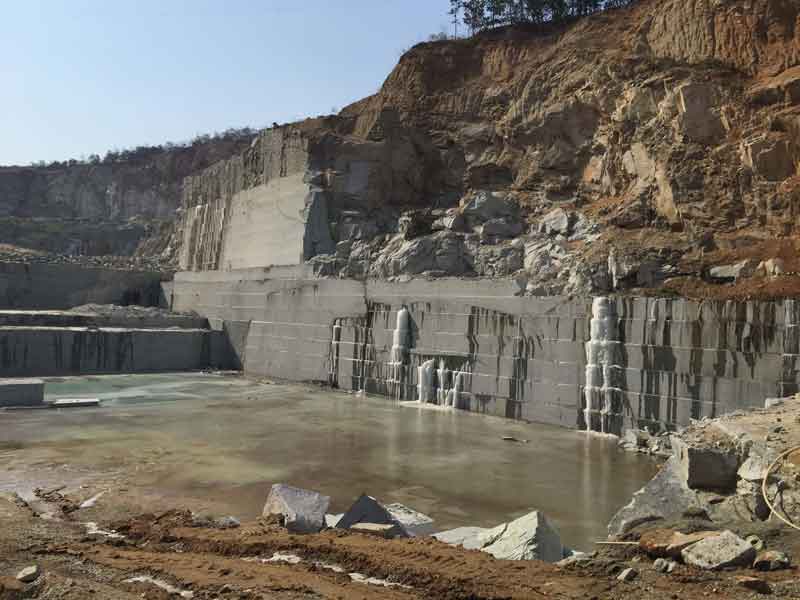A Trip With Granite Quarries in South Africa: Unveiling Nature's Artistry
A Trip With Granite Quarries in South Africa: Unveiling Nature's Artistry
Blog Article
Unearthing the Rich Background and Sustainable Practices of Granite Quarrying
As we base on the precipice of revealing the intricate tapestry of granite quarrying, a trip with time reveals not simply the physical act of extracting rock but likewise the cultural and historical significance woven into the really material of this technique. From the ancient beginnings that laid the structure for contemporary quarrying strategies to the sustainable methods that are forming the future of this industry, each sculpt mark on granite surface areas narrates waiting to be uncovered (granite quarries in south africa). The tradition of granite quarrying stretches much beyond simple removal; it is a testimony to human ingenuity, durability, and the long-lasting allure of this marvelous stone
Ancient Beginnings of Granite Quarrying
Dating back to old worlds, the method of quarrying granite has been an essential component of human background and building improvement. The earliest proof of granite quarrying go back to ancient Egypt, where huge pyramids and complex sculptures were crafted from this sturdy rock. The Egyptians utilized primitive tools to draw out granite blocks from quarries, showcasing the value of this product in their huge building and constructions.
Progressing in history, the Greeks also made considerable contributions to the quarrying of granite. The Greeks utilized granite in different architectural marvels, such as temples and statues, demonstrating their skill in shaping and carving this hardy rock. The Romans additionally improved the strategies of quarrying granite, using innovative devices like blades and hammers to essence and shape granite for their renowned structures.
Through the centuries, the technique of quarrying granite has actually progressed, with contemporary technologies enhancing efficiency while maintaining the classic allure of this natural stone - granite quarries in south africa. From old human beings to modern building contractors, the heritage of granite quarrying continues to shape our globe
Advancement of Quarrying Methods
The evolution of quarrying strategies has been marked by a continual progression in the direction of greater effectiveness and accuracy in extracting granite. Early quarrying methods entailed manual labor with fundamental devices such as chisels, hammers, and wedges to draw out granite blocks from the planet.
In even more recent times, the development of equipment transformed the quarrying market, making it possible for faster extraction rates and raised productivity. Technologies such as diamond cable saws, high-pressure water jets, and pneumatic drills have ended up being standard in modern quarries, enabling for exact cutting and lowered waste. Innovations in computer-controlled equipment and 3D modeling have enhanced quarrying operations, leading to very little ecological impact and boosted sustainability methods. As the demand for granite proceeds to climb, the advancement of quarrying methods continues to be essential to meeting industry requires successfully and sustainably.
Social Relevance of Granite
Granite holds a profound cultural value throughout various civilizations as a result of its enduring presence in building masterpieces and revered monoliths. From the marvelous pyramids of Egypt to the elaborate carvings of the Angkor Wat holy place in Cambodia, granite has been a product of choice for sharing magnificence and longevity in social heritage. In ancient Rome, granite columns embellished temples and public structures, representing toughness and permanence. The social relevance of granite extends past its physical attributes; it personifies resilience, security, and eternity, making it a sign of enduring legacies and traditions.

Sustainable Practices in Quarrying
In the middle of the abundant background of granite quarrying and its cultural importance exists an expanding focus on lasting practices within the industry. As environmental understanding and problems concerning resource depletion have increased internationally, the quarrying field has actually increasingly embraced sustainable methods to reduce its effect on the atmosphere and bordering areas.

Additionally, improvement and recovery of quarry websites post-extraction are integral to sustainable methods. By bring back quarried Learn More Here locations to an all-natural or beneficial state, such as producing wildlife environments or leisure rooms, quarriers Continued can counter the ecological footprint of their operations and contribute positively to the regional environment.
Heritage of Granite Quarrying
With a historic background soaked in workmanship and commercial progression, what sustaining influence has granite quarrying left on the landscape of contemporary society? The legacy of granite quarrying goes beyond mere extraction methods; it has actually formed architectural wonders, urban landscapes, and social heritage worldwide. The sturdy nature of granite has actually made it a recommended selection for monoliths, buildings, and infrastructure, standing as a testament to the skill and artistry of quarry employees throughout generations.
Additionally, the economic footprint of granite quarrying can not be overlooked. The industry proceeds to supply job opportunity and drive local economies in areas where granite removal prevails. It has additionally stimulated technological developments in quarrying techniques and tools, causing much more efficient and lasting methods.
In terms of sustainability, the tradition of granite quarrying consists of efforts to reduce environmental effects via improvement tasks and responsible source monitoring. By balancing financial passions with environmental stewardship, the market makes every effort to guarantee that future generations can remain to benefit from this enduring all-natural source.
Conclusion

Report this page